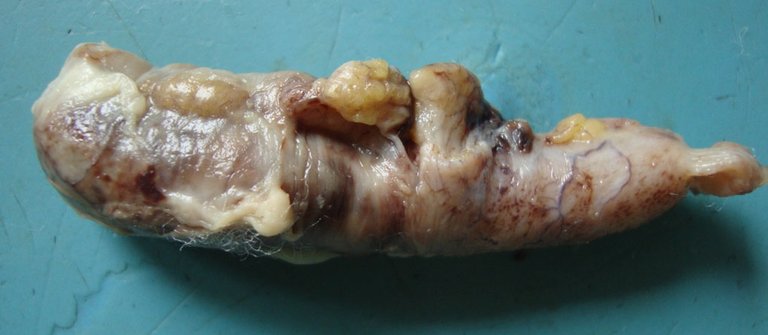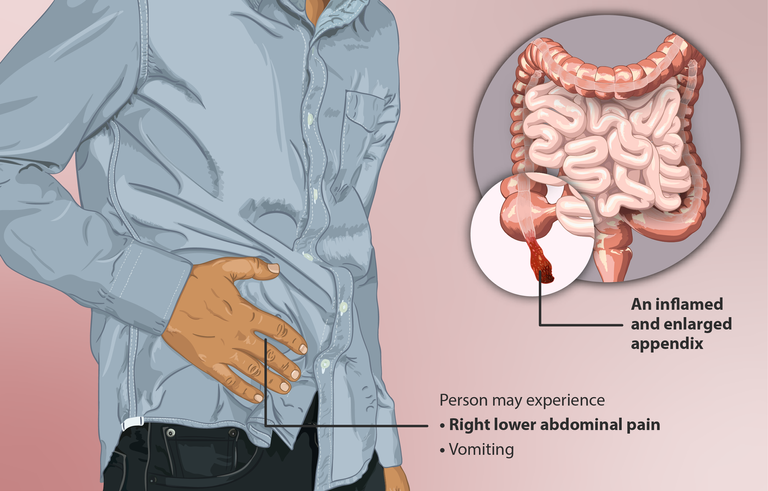Appendicitis: Exploring the Pathophysiology, Symptoms, and Treatment Modalities
A friend of mine was diagnosed with appendicitis and had it removed. Appendicitis is a pretty common word that we have heard off, know someone who has had it or even had a fair share of being diagnosed of it. Whichever one you pick, appendicitis is a pretty common medical condition as it is one of the most registered abdominal surgery worldwide. So in this post, I want to talk about what it is, the symptoms associated with it, and how it is treated.
Actually, let's start with the Appendix. Also known as the Vermiform Appendix (vermiform meaning worm-like and appendix just referring to an appendage) and it is off the Cecum which is part of the large intestine. It is an organ about 2 to 3 inches that was referred to as vestigial because they believe it has lost its function over time but this isn't completely true because the appendix is made up off lymphatic nodules which houses white blood cells that protect the gastrointestinal organs from bacterial invasion. It is also a place to house good bacteria which will help replenish the good bacteria back to its position.
When the appendix become inflamed, then it is known as appendicitis and this occurs when the inside of the appendix (lumen) is obstructed. The obstruction can be from different materials such as fecal matter, undigested food or foreign materials, and can be inflamed by tumor sometimes. When this happens, the pressure inside the appendix leading to its enlargement, engorgement, and swellings.
When the appendix is inflamed, it would cause visceral pain because the body isn't good at localizing pain because the pain would referred. For instance, the pain of appendix is usually felt around the belly button even when it is not close to the bellybutton. Then other tissues around the appendix can begin to display this pain as well. Soon, bacteria will begin to grow and invade the surrounding wall of the appendix and this will lead to more inflammation of the appendix and the tissues around it. An example of tissues that will be inflamed is the parietal peritenoum which is innervated by different types of nerves such as the somatic nerve. With the inflammation of the parietal peritenoum the pain can become a little localized as it covers the appendix.
People who suffer from appendicitis would start to feel abdominal pain in the lower quadrant of the stomach, anorexia, Nausea and vomiting, low grade fever, indigestion flatulence, bowel movement, aches and so on. To treat appendicitis, the current standard of treatment is still appendectomy which is the cutting of the inflamed appendix. Let me guess, you just said "YES" because that's the only method you know. Well, for now it is still the safest method but it can be also treated with antibiotics.
Although I say it can be treated with antibiotics, so many studies have shown that a very little percentage of people do not respond to antibiotics, and since it would be difficult for the doctor to know if you are one of them, they just take it out. Also, when treating someone, you need to consider which is a better risk by removing the appendix instead of letting it rupture. Also, lots of people treated with antibiotics still come back with appendicitis after about 5 years and still get the appendix removed.
In cases of complications where the appendix ruptures, fecal matter, bacteria, and other materials can be released to the abdominal region. These materials can either move freely around the abdomen known as free perforation, the patient can also show signs of sepsis, and at this time, the patient needs immediate surgical procedure.
Read More
- https://www.mountsinai.org/health-library/diseases-conditions/appendicitis
- https://www.hopkinsmedicine.org/health/conditions-and-diseases/appendicitis
- https://www.ncbi.nlm.nih.gov/books/NBK459205/
- https://www.ncbi.nlm.nih.gov/books/NBK580514/
- https://www.ncbi.nlm.nih.gov/pmc/articles/PMC8177914/
- https://pubmed.ncbi.nlm.nih.gov/25121154/


What a good write up.....I learnt a lot from it
Thanks for your contribution to the STEMsocial community. Feel free to join us on discord to get to know the rest of us!
Please consider delegating to the @stemsocial account (85% of the curation rewards are returned).
Thanks for including @stemsocial as a beneficiary, which gives you stronger support.